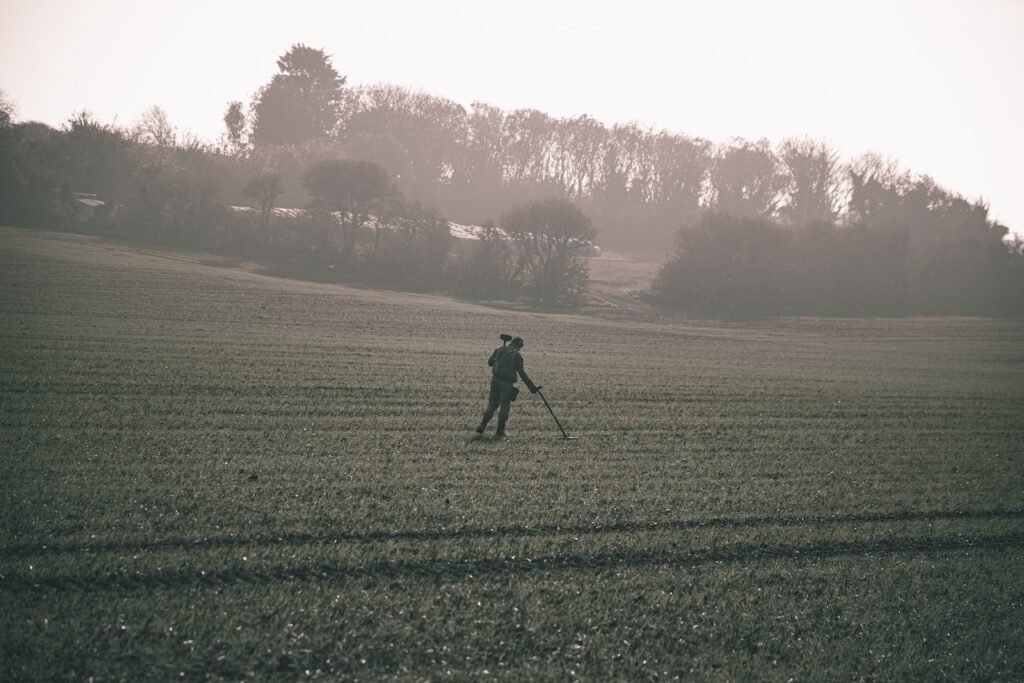The Challenge of Soil Mineralization
Metal detecting enthusiasts often encounter a significant hurdle in their quest for buried treasures – soil mineralization. This phenomenon, caused by the presence of minerals in the ground, can hinder the effectiveness of metal detectors and render them less accurate. Understanding soil mineralization and its impact is crucial for those who wish to navigate this challenge and maximize their chances of successful finds. In this article, we will delve into the science behind soil mineralization, explore its effects on metal detectors, and discuss strategies to overcome these obstacles.

Understanding Soil Mineralization and its Impact
Soil mineralization refers to the process in which minerals, such as iron, manganese, and other conductive elements, accumulate in the soil over time. These minerals are often found in abundance in areas that have a history of human activity, such as old settlements or battlefields. While these minerals themselves may not be valuable, their presence can interfere with metal detectors as they generate signals similar to those emitted by desired metallic objects.
How Soil Mineralization Affects Metal Detectors
Metal detectors work by emitting a magnetic field and detecting disturbances or deviations caused by metallic objects. When soil mineralization is present, the detector’s signal is disrupted by the conductive minerals in the ground, leading to false readings or reduced detection depth. This interference can make it challenging for detectorists to accurately identify the presence and location of buried targets.
Exploring the Science Behind Soil Mineralization
The science behind soil mineralization lies in the conductivity of minerals. Conductive minerals have the ability to conduct electricity, and when a metal detector emits an electromagnetic field, these minerals can create eddy currents that interfere with the detector’s signal. The more conductive the minerals, the stronger the interference, resulting in reduced sensitivity and accuracy.
Factors Influencing Soil Mineralization Levels
Several factors influence the level of soil mineralization in a particular area. Soil composition, geological conditions, and the presence of previous human activity all play a role. Soils with a high iron content, for instance, tend to exhibit greater mineralization. Additionally, areas with a history of industrial activities, like mining or metalworking, are more likely to have higher mineralization levels.
The Consequences of Soil Mineralization for Metal Detecting
The consequences of soil mineralization for metal detecting enthusiasts are significant. False signals can lead to wasted time and effort digging up non-valuable targets, while reduced detection depth limits the chances of finding deeply buried or small-sized objects. As a result, the overall success rate of metal detecting in mineralized soil is significantly lower compared to areas with low mineralization levels.
Strategies to Overcome Soil Mineralization Challenges
While soil mineralization poses a challenge, there are strategies that can help overcome these obstacles. One effective approach is to adjust the settings of the metal detector to compensate for the interference caused by mineralization. By fine-tuning the sensitivity and discrimination settings, detectorists can minimize false signals and increase their chances of detecting valuable targets.
Adjusting Metal Detector Settings for Soil Mineralization
When dealing with mineralized soil, reducing the sensitivity of the metal detector can be beneficial. Lowering the sensitivity level decreases the magnetic field’s depth penetration, reducing the influence of conductive minerals on the detector’s readings. Additionally, adjusting discrimination settings to ignore signals from less valuable metals can help filter out unwanted responses caused by mineralization.
Tools and Techniques for Soil Mineralization Identification
Before beginning a metal detecting session, it is essential to identify the level of soil mineralization present. Tools such as soil sampling kits, which analyze the mineral content of the soil, can provide valuable information. Additionally, experienced detectorists often use test targets made of various metals to understand the impact of mineralization on their specific detector models.
Enhancing Metal Detecting Performance in Mineralized Soil
To enhance metal detecting performance in mineralized soil, some detectorists employ specialized search coils designed to minimize the effects of soil mineralization. These coils, often referred to as “DD” coils, are more resistant to interference and can improve detection accuracy. Additionally, employing ground balancing techniques specific to mineralized soil conditions can help reduce false signals.
Case Studies: Success Stories in Mineralized Soil Detection
Despite the challenges posed by soil mineralization, many metal detecting enthusiasts have achieved remarkable success in locating valuable artifacts and treasures. By employing a combination of the strategies mentioned above, along with persistence and experience, they have managed to overcome the hurdles and uncover hidden gems in mineralized soil.
Navigating the Complexities of Soil Mineralization
Soil mineralization presents a formidable challenge to metal detecting enthusiasts, but with a deeper understanding of its impact and the strategies available to mitigate its effects, successful finds are still possible. By adjusting metal detector settings, utilizing specialized tools, and employing techniques specific to mineralized soil conditions, detectorists can increase their chances of uncovering treasures even in the most mineral-rich areas. With perseverance and knowledge, the complexities of soil mineralization can be navigated, leading to exciting discoveries and rewarding experiences in the world of metal detecting.
